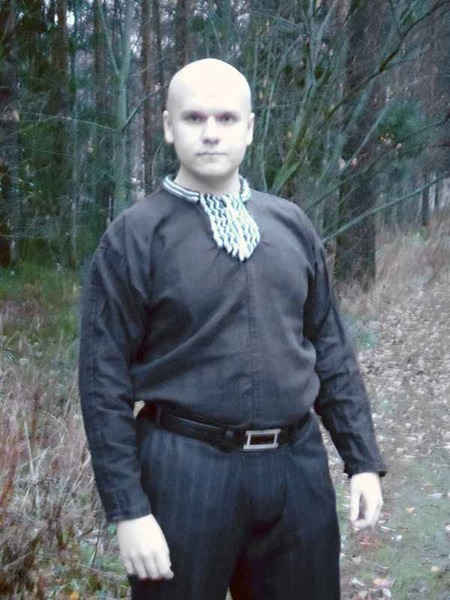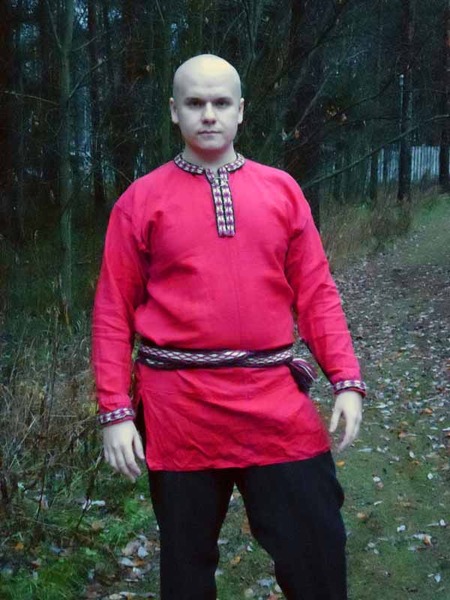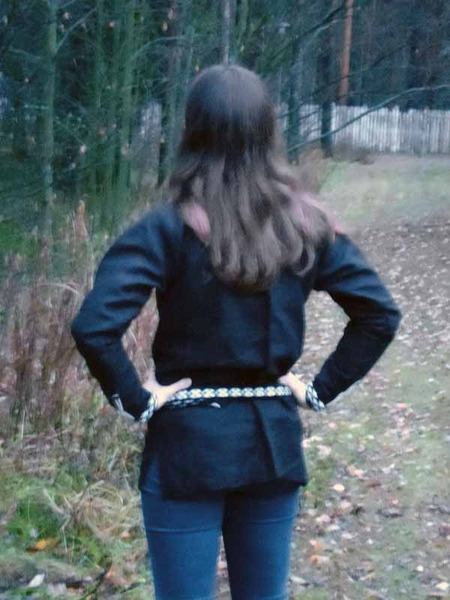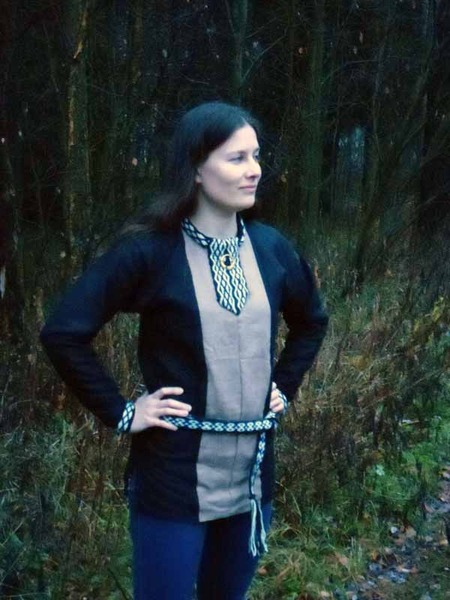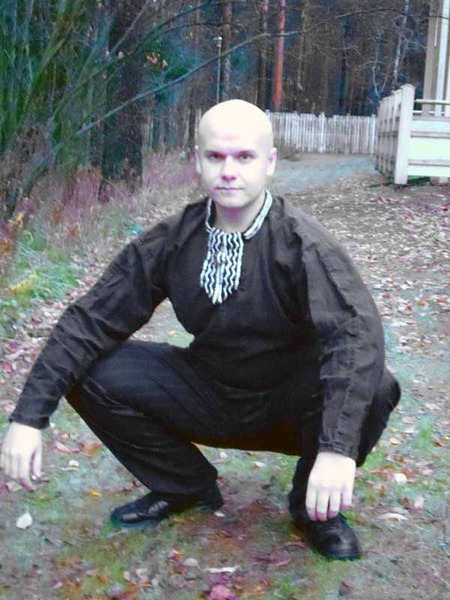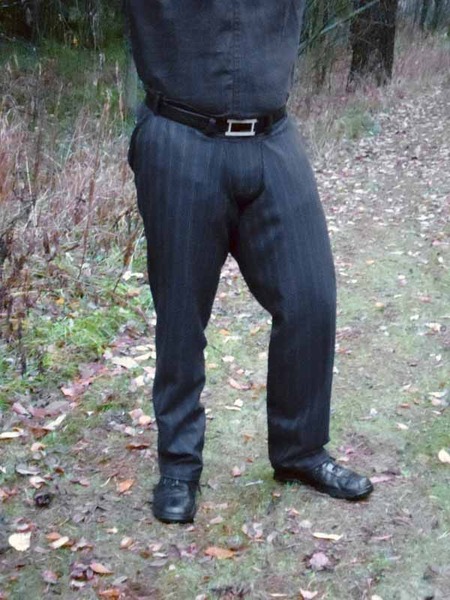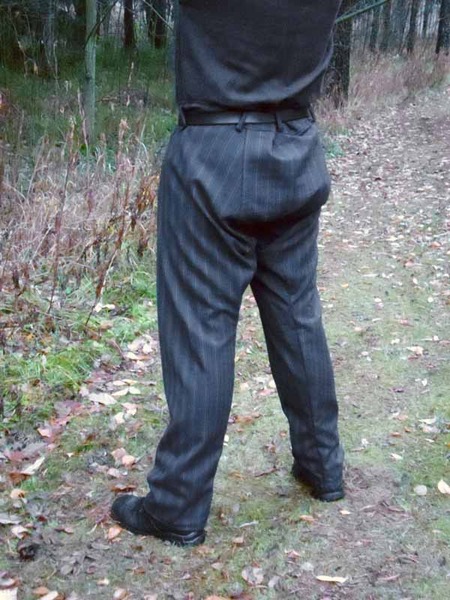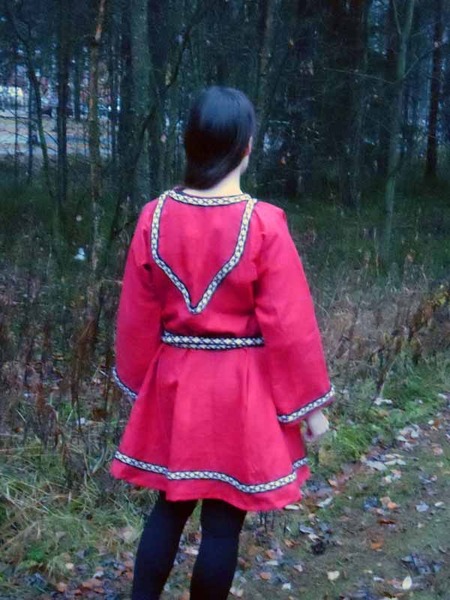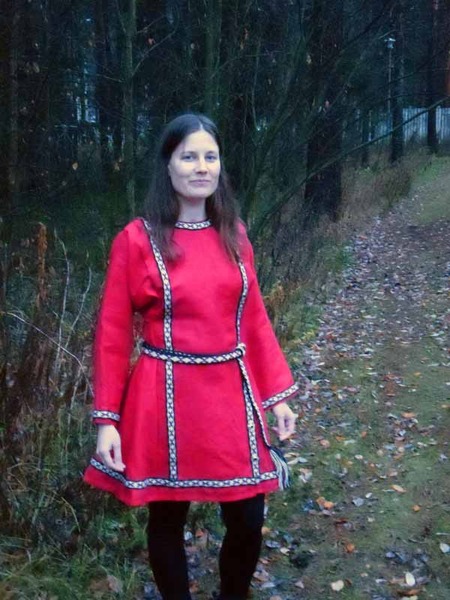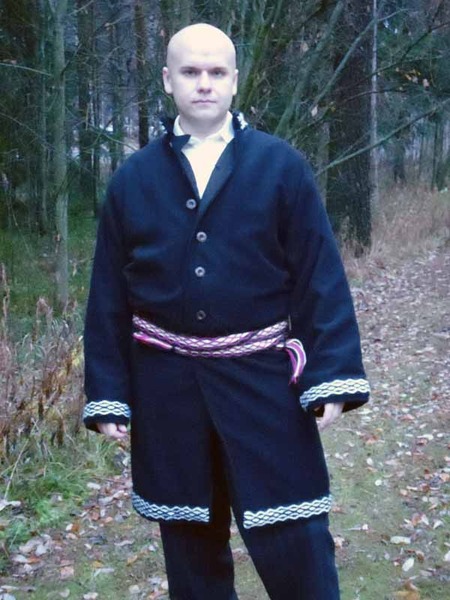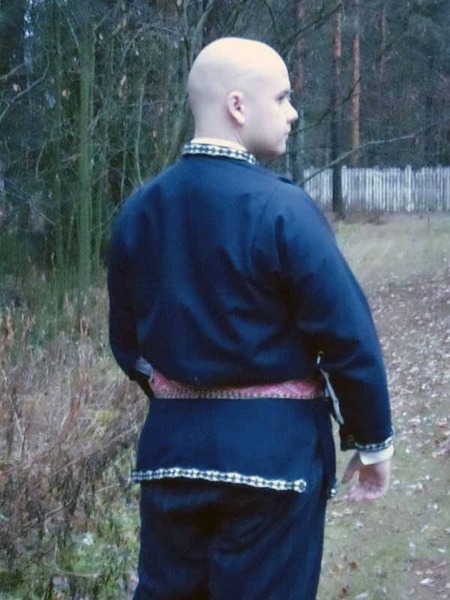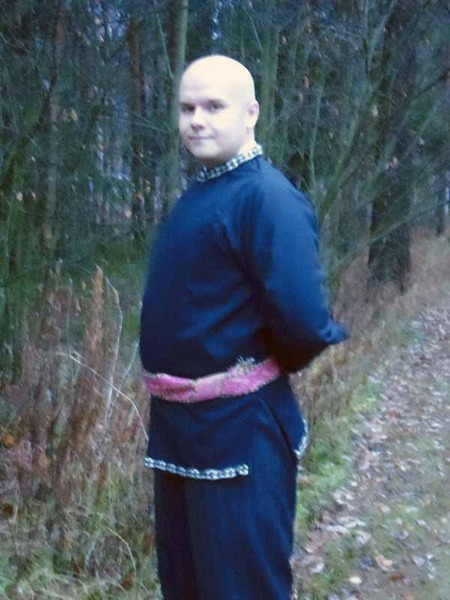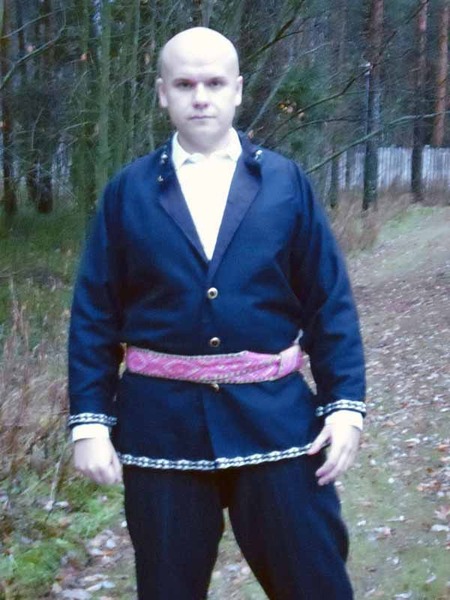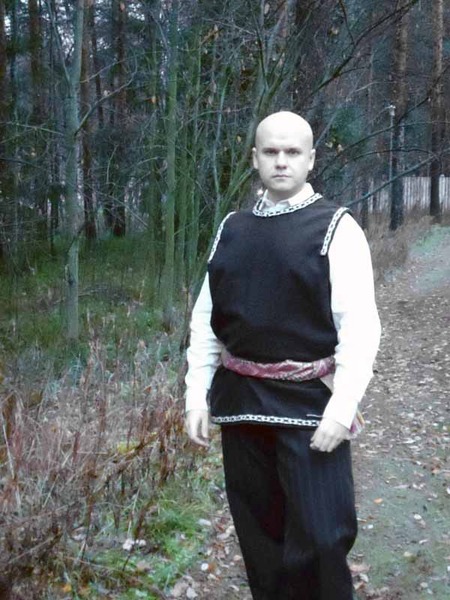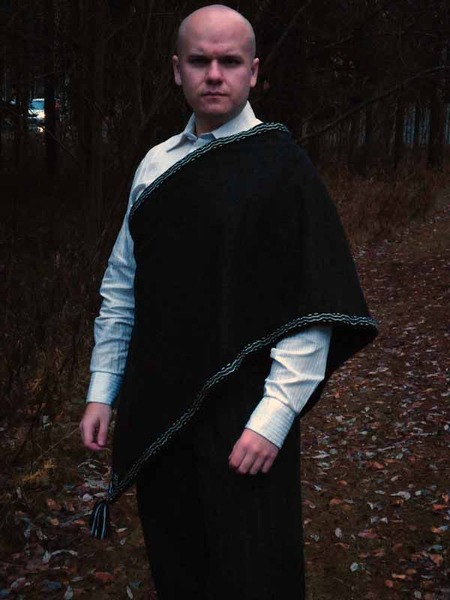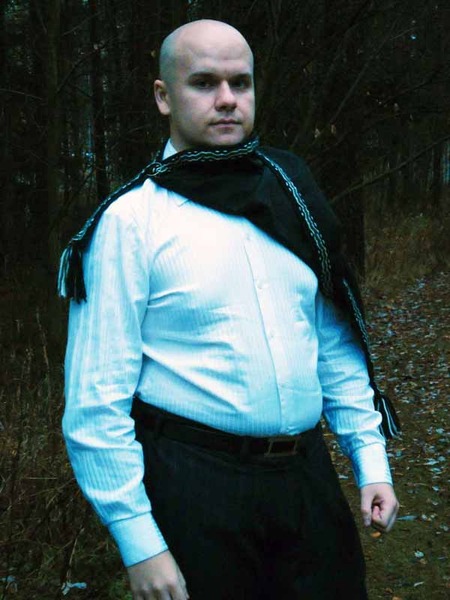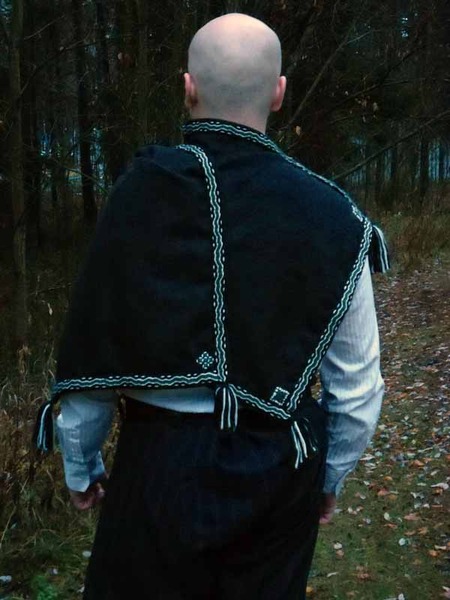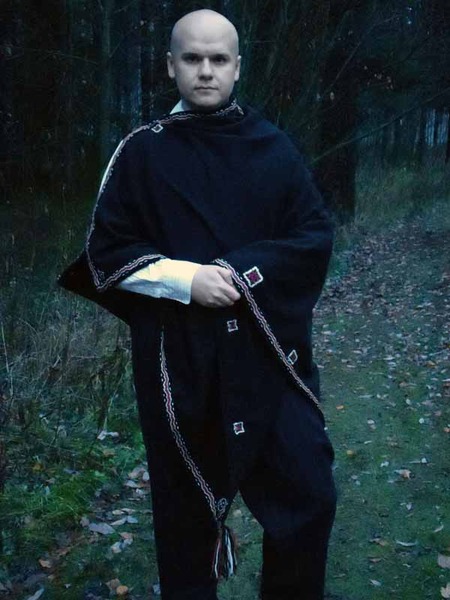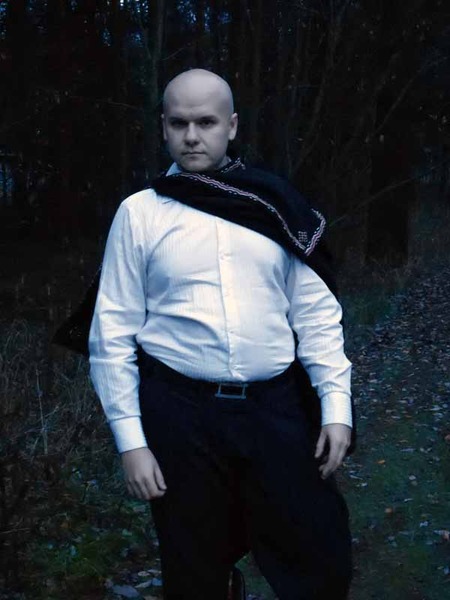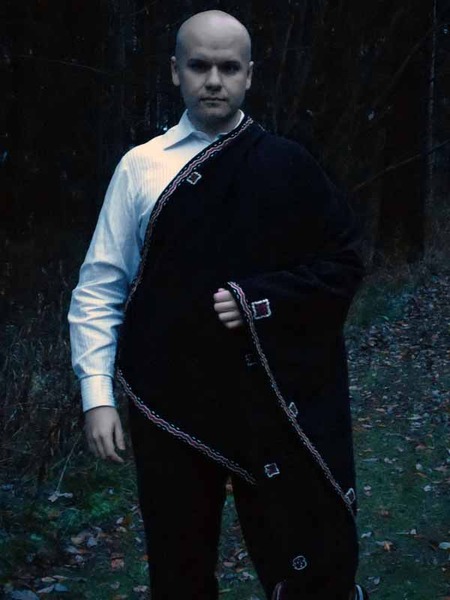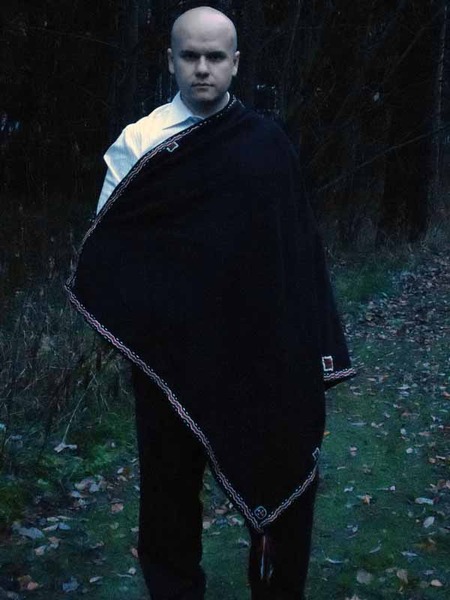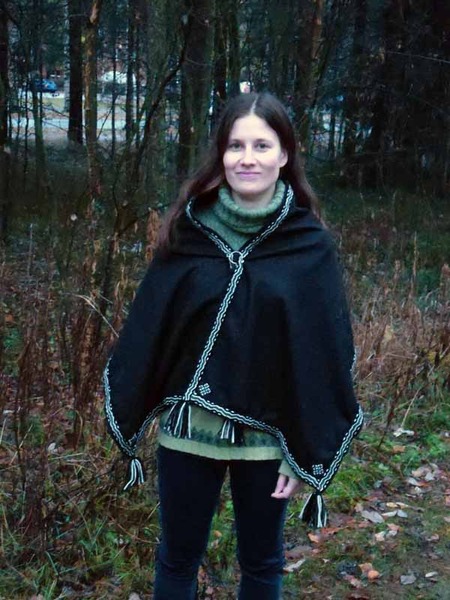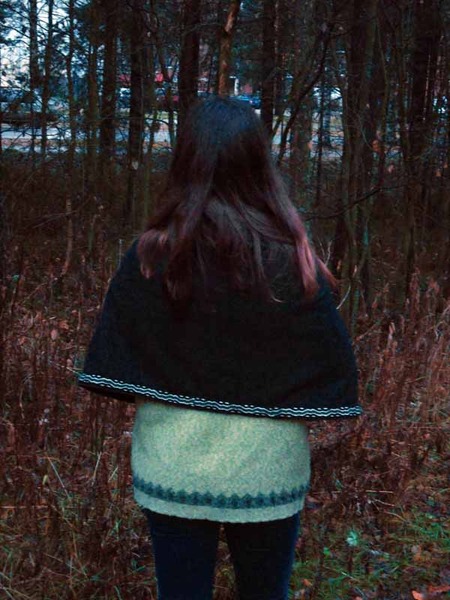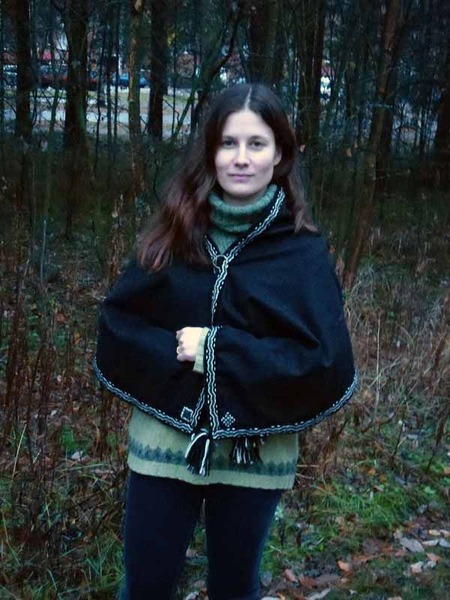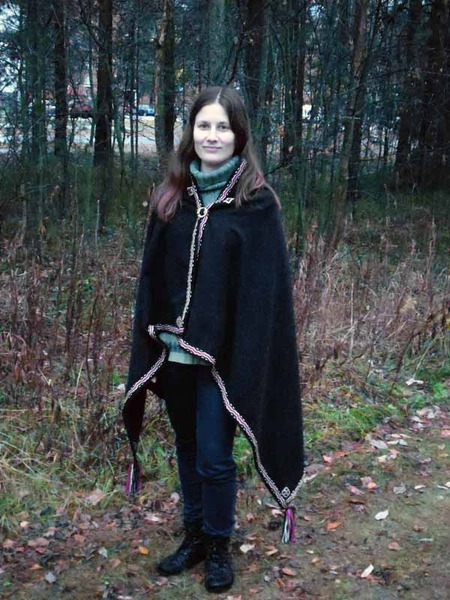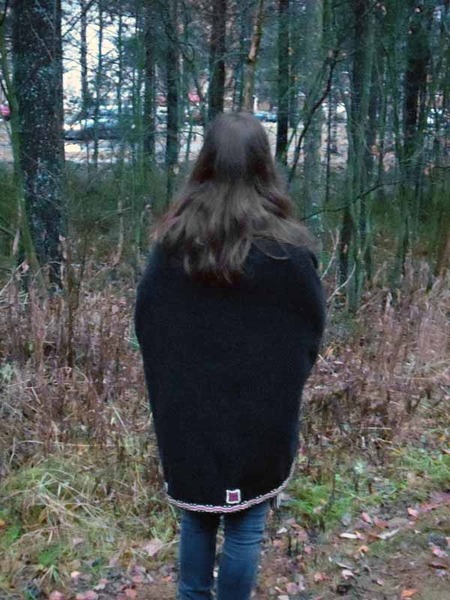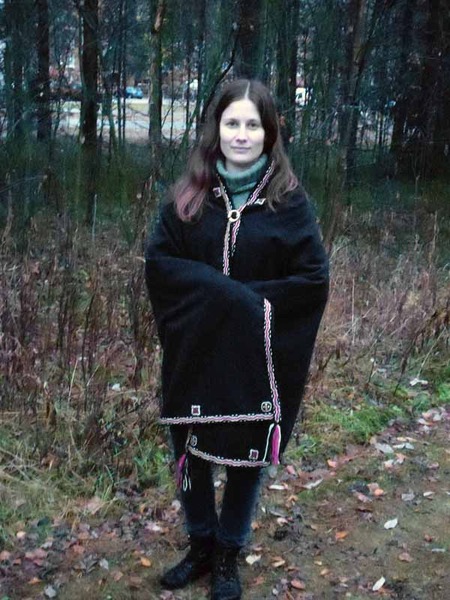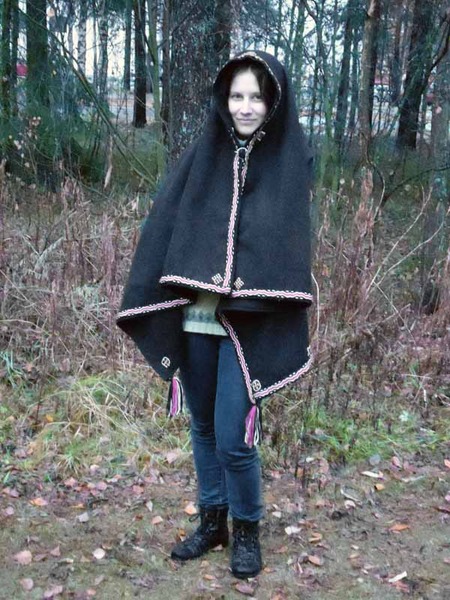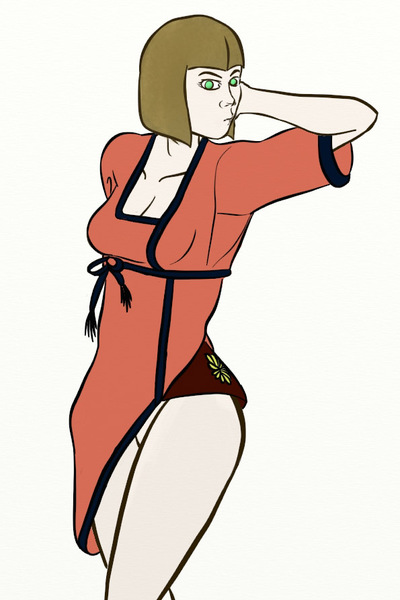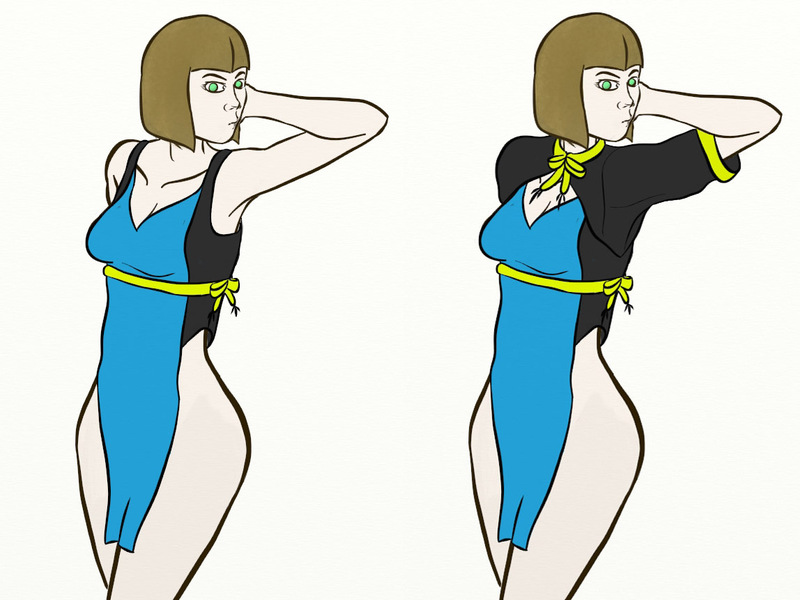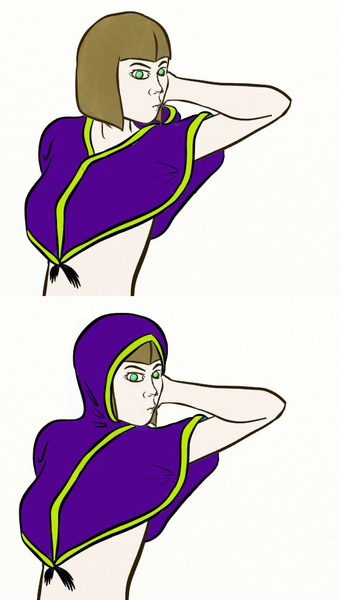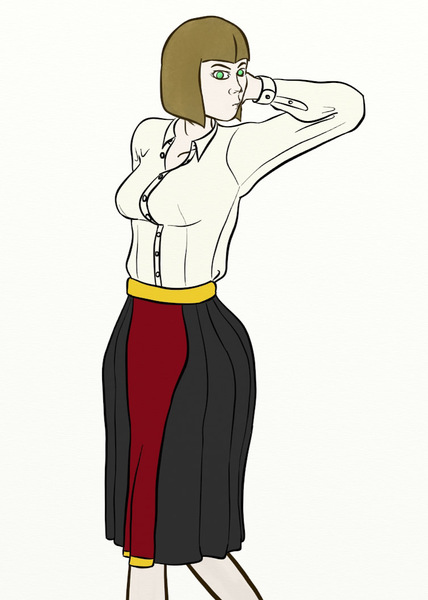Etnofutu – The Ethnofuturism of Fashion
What to do with these?
The general idea
I was originally inspired by Southeast Estonian Setos, who wear traditional clothes together with modern ones – for example a linen shirt with inkle-weaved bands with a suit. That's the sort of thing I'm looking for here, and that's why the photos mostly show the pieces being worn with modern clothing. Many ancient style elements will fit seamlessly into a modern milieu – mixing and matching is encouraged.
Belts
Womens' belts were usually 8–14 tablets thick and mens' often 20 or more. Tablet-woven belts were roughly 3 metres long, and would wrap around the wearer several times, supposedly granting protection from magic. My Finnish-language pamphlet, Ethnofuturism of Fashion has a few simple sample designs that should be followable from the illustrations, and there is quite a number of English-language tablet weaving guides available.
Paitoja
You don't have to use fitted shoulders with shirts, as the weight of the sleeves will pull the fabric down. If the bands of the collar are wide enough, the colalr will stay shut on its own. Otherwise a brooch is necessary. You can save on labour and keep the traditional feminine lines by switching the vertical bands with a contrasting coloured panel.
All of these shirts have loop cuffs. We know from the Volga basin that the old style with the brooches and all gave way first to clothing closed with "straps," but unfortunately no-one recorded any details. This design with interlocking braided loops is from Italy.
Trousers
The bog trousers from Thorsbjerg in Schleswig-Holstein are a very well known and imitated model. The original has extremely tight shins and integrated socks, which aren't in keeping with modern styles, so the main element left is the panel construction, and something broadly similar was followed by all prehistoric trouser finds and Saami trousers. The belt band and loops are authentic and can be repurposed for modern belts. The hip area has plenty of space for hidden pockets.
In these ones I've added hidden pockets on both sides and left the legs rather wide. Very narrow trousers are easy to wrap gaiters around, but that's really a concern these days. The width is up to your own sense on style. Originally the belt band would be turned over to hide a string belt, but that looks weird when combined with modern clothes. The stripes line up surprisingly well, and I presume the Thorsbjerg design was made with striped trousers in mind.
Dresses
I've counted any unlined long womenswear item as a dress. The traditionally formidable amount of bands makes dresses extremely labour-intensive, and playing around with coloured panels is a very good idea.
The red dress took 40 hours of work and is a fairly close match to a historical piece – the colour and the buttons intergrated into one of the bands are the only real departures. The gray jerkin has a distinct Manchu influence. As modern fashion demands a degree of form-fitting, it's quite necessary to put in buttons or loops. In both of these the mechanism is embedded into the bands.
Coats
I've added permanent folds to the coats to simulate them being belted down. They don't fit perfectly without one, though, so the folds are mostly for looks. So far I have not made any coats for women, but they'd likely work out just fine as heavier, lined dresses.
The thick wool with a linel lining in the overcoat can easily take any conditions the 65th parallel can dish out at Oulu. The blazer-sized one on the other hand is quite cold. The vents let in too much cold air, particularly while bicycling. The jerkin is outright too cold for winter use.
Cloaks
A small cloak functions fairly well as a shawl or a scarf. They're extremely warm, and the stiff fabric stays upright even when on the move. A larger one would be more out of place, but could possibly be used with more formal wear.
Unrealized ideas
Decorative squares and other sorts of embroidery could easily be substituted with felt flowers and the like – less authentic, but that's not what we're going for here anyway.








